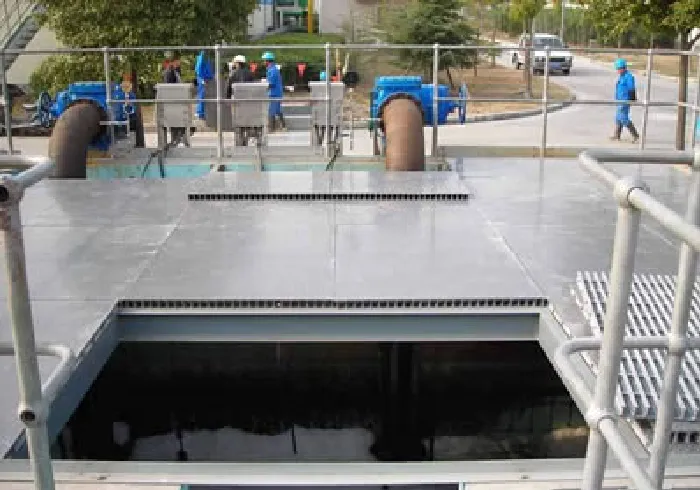loading...
- No. 9, Xingyuan South Street, Dongwaihuan Road, Zaoqiang County, Hengshui, Hebei, China
- admin@zjcomposites.com
- +86 15097380338
- Welcome to visit our website!
frp angle bar
Understanding FRP Angle Bars Applications and Advantages
Fiber Reinforced Polymer (FRP) angle bars have become increasingly prominent in various industries due to their unique properties and advantages over traditional materials like steel and aluminum. Composed of a polymer matrix reinforced with fibers, typically glass or carbon, FRP angle bars combine lightweight characteristics with exceptional strength and durability. This article explores the various applications and benefits of FRP angle bars, illustrating why they are gaining traction in modern engineering and construction.
What are FRP Angle Bars?
FRP angle bars are structural components shaped in an L configuration, providing excellent load-bearing capabilities while facilitating efficient support in construction and manufacturing processes. The production of these bars involves combining high-performance polymers with reinforcing fibers, resulting in a material that possesses a high strength-to-weight ratio. This quality makes FRP angle bars particularly appealing for applications requiring robust structural support without excessive weight.
Applications of FRP Angle Bars
1. Construction One of the primary uses of FRP angle bars is in the construction sector. They are increasingly employed in structural frameworks, bridge components, and support systems. Due to their corrosion resistance, FRP angle bars are especially advantageous in environments exposed to harsh weather or chemical elements, ensuring longevity and reduced maintenance costs.
2. Marine Engineering The marine industry relies heavily on FRP angle bars for constructing docks, piers, and vessels. Their lightweight nature aids in improving fuel efficiency and performance while their resistance to seawater corrosion prolongs the lifespan of marine structures.
3. Aerospace and Transportation In aerospace, where weight savings are paramount, FRP angle bars contribute to reducing the overall mass of aircraft structures. They are also finding uses in automotive components, where enhanced performance and energy efficiency are crucial.
4. Electrical and Telecommunications FRP materials are non-conductive, making them suitable for electrical applications. FRP angle bars can be used as mounts for electrical wiring, antennas, and communication equipment, offering both structural support and electrical insulation.
frp angle bar

5. Renewable Energy The renewable energy sector has started to utilize FRP angle bars in wind turbine construction and solar panel installations. Their lightweight and durable nature makes them ideal for supporting structures that must withstand dynamic forces and environmental stresses.
Advantages of FRP Angle Bars
1. Corrosion Resistance Unlike traditional materials that can rust and deteriorate over time, FRP angle bars maintain their integrity even in corrosive environments. This resistance greatly reduces the need for protective coatings and regular maintenance.
2. Lightweight FRP angle bars are significantly lighter than their steel counterparts, which translates to lower transportation costs and easier handling during installation. This feature positively affects labor costs and overall project timelines.
3. High Strength Even though they are lightweight, FRP angle bars provide superior strength and stiffness, making them capable of supporting heavy loads and enduring stress, thus ensuring structural safety.
4. Aesthetics and Design Flexibility The versatility of FRP in terms of color and finish allows for greater aesthetic appeal in structural applications. Designers and architects can leverage FRP angle bars to create visually appealing structures without sacrificing performance.
5. Cost-Effective in the Long Run Though the initial cost of FRP materials may be higher than traditional options, their durability, low maintenance requirements, and life expectancy often result in overall cost savings.
Conclusion
In conclusion, FRP angle bars represent a significant advancement in materials science, offering numerous benefits across various industries. Their unique combination of strength, lightweight properties, corrosion resistance, and versatility makes them an attractive choice for engineers and architects looking to innovate in construction and design. As industries continue to seek sustainable and efficient solutions, the usage of FRP angle bars will likely expand, paving the way for a new era of structural engineering.
-
The Rise of FRP Profiles: Strong, Lightweight, and Built to LastNewsJul.14,2025
-
SMC Panel Tanks: A Modern Water Storage Solution for All EnvironmentsNewsJul.14,2025
-
GRP Grating: A Modern Solution for Safe and Durable Access SystemsNewsJul.14,2025
-
Galvanized Steel Water Tanks: Durable, Reliable, and Ready for UseNewsJul.14,2025
-
FRP Mini Mesh Grating: The Safer, Smarter Flooring SolutionNewsJul.14,2025
-
Exploring FRP Vessels: Durable Solutions for Modern Fluid HandlingNewsJul.14,2025
-
GRP Structures: The Future of Lightweight, High-Performance EngineeringNewsJun.20,2025
